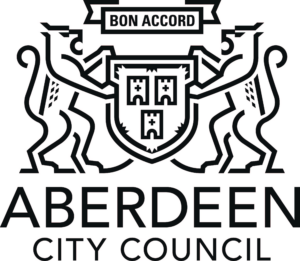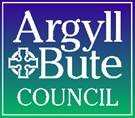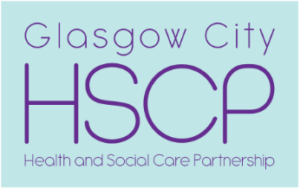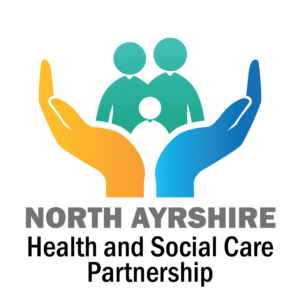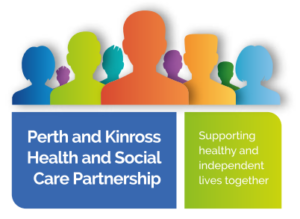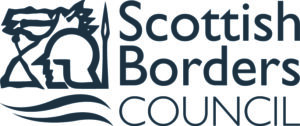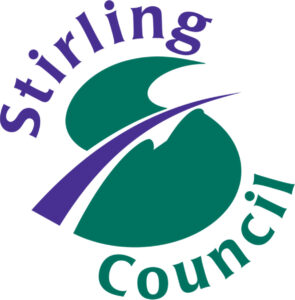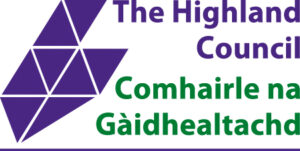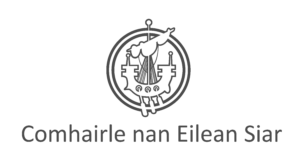LIST OF CONSULTATION QUESTIONS
Question 1 – Do you think that it would be helpful to shorten and simplify the strategy, to make it more user-friendly?
Yes
Please explain your response further:
At 56 pages the current strategy is too long, and the risk is that few will read it. It might be useful to include an illustrated summary document providing an overview with graphics – the Scottish Government’s 2017 Justice in Scotland: Vision and Priorities is a good example. Plain English and avoiding acronyms is essential – a priority must be that this strategy is easily (and widely) understood, given the lack of understanding of community justice both within organisations and by the general public. A clearer distinction between the role and remit of Community Justice Scotland, Community Justice Partnerships and Justice Social Work (JSW) would also be helpful – ‘community justice’ and ‘justice services’ are seen as interchangeable terms which leads to confusion. (Confusion which then makes it more difficult to deliver on the strategy.)
Question 2 – Do you think that the strategy should contain more specific and time-limited aims and actions than at present?
Yes
Please explain your response further:
The legacy of COVID-19 will continue for many years and must be taken into consideration. Aims must be SMART but take account of the different circumstances affecting different CJPs. The revised Outcomes, Performance and Improvement Framework will assist partnerships to determine how best to plan to meet national aims and actions. A logic modelling approach may assist in determining short-, medium- and longer-term objectives.
Question 3 – To what extent do you agree or disagree with the current vision?
Agree
Please explain your response further:
The vision remains relevant. The language should be reviewed and revised e.g. ‘management’ of offending suggests a too narrow interpretation of community justice – it is relevant in the justice social work context but does not reflect the orle of other agencies and/or services e.g. restorative justice or the provision of alcohol and drug services by the Third Sector.
Question 4 – To what extent do you agree or disagree with the current mission statement?
Agree
Please explain your response further:
Again, this remains broadly relevant. Arguably, it has yet to deliver significant results in terms of “Deliver(ing) a decisive shift in the balance between community and custodial sentences”. There has been limited success in terms of the priorities; for example, “Improved Community Understanding” and the priorities more generally. Prevention and early intervention could be included as explicit statements and including multi-agency collaborative working would frame the resulting narrative more clearly given this is a key factor in delivering the community justice agenda. Moreover, an additional mission statement and associated priority could be framed around reducing the use of remand and trauma informed approaches. The language could be refined. For example, not all people need to be ‘reintegrated’.
Question 5 – How useful do you think the current vision and mission statement are at helping partners and communities to work together effectively to drive improvement in community justice?
Neutral
Please explain your response further:
However good the vision and mission statements are they won’t in and of themselves ensure partners and communities work well together. (Indeed, the current delivery of community justice bears this out as it widely acknowledged that this is inconsistent across the country.) Hence our suggestion in Q4 to specifically include reference to including multi-agency collaborative working. The ambition is also dependent on other factors such as the availability of resources, judicial decision making, and different communities’ experiences of community justice.
Question 6 – Do you think that a renewed community justice strategy needs a focus on each of the following?
Select all that apply
X Improved Community Understanding and Participation
Please add any comments on this priority:
Individuals that have offended are rooted in communities; they don’t exist in isolation and are often a product of the deprivation within a local area – it is a commonly known fact that the highest levels of offending correlate to the highest areas of multiple deprivation in Scotland. Victims are also rooted in communities. Tackling poverty, poor housing and a lack of services is critical if the vision for community justice is to be realised.
Therefore, it follows that communities are part of the solution and need to understand and participate in delivering community justice and ‘own’ this if social inclusion and reintegration and preventing future victims is to be successful – it is not something justice sector agencies can or should seek to achieve on their own. Community justice begins before an individual has offended, rooted in early preventative strategies to avoid becoming involved in the justice system in the first place and victims of crime. It is a failure of the system if this occurs. The reality is that there will be failures and from the point of entry into the justice system (e.g. from the point an individual is given a warning by Police Scotland or charged with a crime), this should be seen as a journey with the overarching aim of working with and supporting individuals to ensure they get off the justice train at the earliest possible stop, be that diversion from prosecution, a fine, a community order or after serving a prison sentence, in order to ensure they do not reoffend and fulfil their potential as active citizens. Involving those with lived experience in the planning, development and delivery of services for people in the justice system is key and, equally, ensuring the voices of victims are heard loud and clear.
X Strategic Planning and Partnership Working
Please add any comments on this priority:
This is key. Good community justice outcomes are predicated on strategic planning and should be a core component in local Community Justice Outcome Improvement Plans. They should focus on whole system responses to offending and re-offending, from prevention through to more targeted and intensive interventions/practices with people who present a risk of harm. It underpins the best use of resources, reduces duplication, and helps to provide more streamlined, and better co-ordinated services. For example, and to extend the analogy of a journey through the justice system, if a community justice partnership identifies restorative justice as a gap in service provision that evidence suggests would make a difference to both the individual that has offended and victims, strategic planning and partnership working is required to resolve this situation. Success, however, requires each of the partners to contribute equally and meaningfully – too often, justice social work is expected to shoulder the burden of driving the agenda and providing the resource. Responsibility is collective. To that end, the strategies of statutory and Third Sector partners need to be aligned with community justice.
X Equal Access to Services
Please add any comments on this priority:
As a fundamental principle, equality of access to services, both in terms of the quality and range and including waiting times, should apply equally whether a person lives in a remote island or rural area as within a large urban area. There are inconsistencies be it regarding accredited programmes, bail services and mental health services, for example. Equal access is a fundament right that should be afforded to all.
X Effective Use of Evidence-Based Interventions
Please add any comments on this priority:
Interpreting evidence-based interventions (it is suggested ‘practice’ is a better descriptor) broadly, this must encompass trauma-informed practice and the ‘what works’ and desistance models of practice. Central to these is the quality of the relationship between an individual requiring support and intervention and the person delivering the intervention. This necessitates caseloads and workloads to be set at the requisite level to enable this and requires sufficient and better resourcing of justice social work to achieve this.
In terms of programmes, and with few exceptions, notably the nationally accredited Caledonian System and Moving Forward: Making Changes (MF:MC, currently unaccredited and being revised) programmes, Scotland does not have access to an array of evidence-based interventions underscored by research that demonstrates they are proven to work which must always be delivered in line with assessed risk and need. Social Work Scotland requested that SAPOR consider undertaking work to develop a programme directory collating a range of programmes, including their efficacy (in much the same way that the Risk Management Authority assessed a range of tools in RATED – Risk Assessment Tools Evaluation Directory). However, SAPOR is unable to do this. By contrast, The Ministry of Justice offers a range of 15 accredited offending behaviour programmes for delivery in the community. Those that relate to general offending include:
- Breaking Free (a health and justice package) – this comprises 2 programmes: one online course and a 12-session behaviour change programme targeting psychological and lifestyle difficulties behind substance use and offending behaviour.
- Building Skills for Recovery – this aims to reduce offending behaviour and problematic substance misuse
- New Me Strengths (NMS) – for adult medium to high-risk men with learning difficulties
- Resolve – for adult men with a medium to high risk of reoffending, to reduce the use of aggression and/or violence by developing insight into behaviours and skills to support achieving pro-social goals
- Thinking Skills – for adult males and females with a medium to high risk of reoffending. This aims to support participants to develop thinking (cognitive) skills to manage risk factors, develop protective factors, and achieve pro-social goals.
However, it would not be achievable for a comparable list of accredited programmes in Scotland at the same exacting standards as the Caledonian System or MF:MC – there would be neither the resource nor capacity to deliver them. But there are currently no acknowledged standards across a range of programmes or their efficacy. There are many gaps, and this needs urgently addressing. The availability of endorsed programmes, as opposed to fully accredited programmes, in the community is likely to increase sentencers’ confidence in community disposals. Indeed, community preference for interventions features as one of the 18 principles that underpin effective interventions (Hollin, C. R and Palmer, E. J., 2008. Offending Behaviour Programmes: History and Development).
Linked to this is a patchy quality assurance and improvement process to evidence that current practices are successful and delivering value for money. For justice social work, the 32 local authorities use a wide variety of methods from Outcome Stars to exit questionnaires. The SWS justice standing committee has already embarked on work to identify best practice and acknowledges the need to capture outcomes more consistently across the country.
Other issues are important, too. For example, ensuring high-quality training is available across the sector to a achieve a baseline, including across the judiciary and Parole Board for Scotland in respect of, for example, FRAME, the Risk Management Authority’s Framework for Risk Assessment, Management and Evaluation and what underpins what works and effective practice, including desistance practice.
Question 7 – How useful do you think the current priorities and improvement actions are at helping partners and communities to work together effectively to drive improvement in community justice?
Quite Useful
Please explain your response further:
These provide a framework for community justice partnerships. It might be helpful if priorities and improvement actions could apply across the system and be assigned to specific agencies where this is applicable thus setting out clear roles and responsibilities. In the context, for example, of the inconsistency of how community justice partnerships are working this may improve accountability. There is, however, a balance to strike between the priorities and improvement actions – if the latter are too prescriptive, there is a risk that they may not apply equally across all areas. A limited set of core improvement actions might be beneficial allowing also for local flexibility.
Question 8 – To what extent do you agree or disagree with the current principles?
Agree
Please explain your response further:
These remain coherent and relevant. Issues highlighted previously about language continue to apply e.g. reintegration doesn’t always apply (and suggests people are always integrated in the first place); and ‘practice’ might be a more balanced and neutral descriptor than ‘intervention’. Equally, ‘informing’ communities suggests a passivity on the part of the community when the intention is surely to be more proactive and ‘engage’ communities. Whilst the principles reflect the individual that has offended and communities, there is limited reference or acknowledgment of victims of crime. A standalone principle recognising the impact of offending on victims would send a clear and powerful message and ensure a better balance between the rights of those seeking community justice in its broadest sense.
Question 9 – How useful do you think the current principles are at helping partners and communities to work together effectively to drive improvement in community justice?
Quite Useful
Please explain your response further:
They set out a shared understanding and overarching framework within which community justice partners can operate. It must be acknowledged that principles as statements, however worthy, achieve little. It is suggested a further additional principle could encapsulate the overarching ambition to properly fund community justice both statutory and Third Sector services. It is right to state that outcomes are not (usually) the preserve of one stakeholder; but stakeholder budgets are restricted and there is little room for manoeuvre. There must a be a clear recognition that unless and until there is a tangible shift of resources into the community justice arena, this will impact on outcomes. And as referenced above, considering placing a stronger emphasis on the roles and responsibilities of individual partners as well as communities to deliver on the community justice strategy would provide focus and scrutiny.
Question 10 – Thinking about the strategy overall, to what extent has it led to collaboration in the effective and strategic use of resources (including, as referenced in the current strategy, by sharing staff, expertise, information, property, and finance) across the community justice sector?
To a great extent
X To some extent
Not at all
Please explain your response further:
Social Work Scotland considers that collaboration has been relatively successful in terms of sharing staff, expertise, information, and property, but this has been limited in respect of financial resources. Too often, justice social work has been the main player in bringing financial resources to the table. The funding for justice social work from Scottish Government to local authorities is described as:
“This ring-fenced grant is provided under sections 27A and 27B of the Social Work (Scotland) Act 1968 as amended. This funding is being provided to allow your Council to discharge its statutory duties in delivering justice social work services and to work towards preventing and reducing further offending in line with your Community Justice Outcome and Improvement Plans (CJOIPs) as a statutory partner.
“When prioritising this funding Justice Social Work must have regard to the Community Justice (Scotland) Act 2016 (“the Act”) which places a duty on the statutory partners (emphasis added) to have regard to the National Strategy for Community Justice (the National Strategy) when developing their plans.”
Social Work Scotland considers this should equally apply to funding provided by Scottish Government to other stakeholders – JSW is simply one stakeholder among many and the confusion, blurring and inter-changeability of the language around community justice and justice social work creates a misunderstanding or misperception that justice social work is the main funder of community justice. It isn’t.
‘Leveraging resources’ requires further definition – unless this is clarified and stakeholders are held more accountable, leveraging financial resources is unlikely to improve much.
Question 11 – Thinking about the strategy overall, to what extent has it achieved its aim of providing a shared vision to help partners and communities to work together effectively to drive improvement in community justice?
To a great extent
X To some extent
Not at all
Please explain your response further:
As indicated above in relation to other questions, the strategy overall has provided a shared vision providing a clear direction of travel to partners and communities. But delivery has been inconsistent. Whilst the community justice arrangements are relatively new, why, for example, 5 years after the launch of the current strategy do the Third Sector continue to say that they do not always have a strong voice and representation in all local community justice partnerships or indeed feel excluded from partnerships? Why are many key stakeholders often absent from community justice partnerships? The answer, or part of the answer, to successfully delivering on the vision and the associated aims and objectives must surely lie in ensuring stakeholders are held more accountable for their contribution to community justice and greater synergy between local and national strategic planning.
Question 12 – Thinking about the strategy overall, would you say that it has influenced the work of your local area/organisation?
X To a great extent
To some extent
Not at all
Please explain your response further:
The vision, mission statements, priorities and principles broadly align with Social Work Scotland’s values and ethos in regard to community justice. Social Work Scotland continues to argue for a paradigm shift in the balance between community and custodial sentences by investing significantly in the use of community sentencing and reducing the use of short-term prison sentences. This is underwritten by the strong belief that only individuals that have committed the most serious offences and are at high risk of causing serious harm should be sent to prison.
Question 13 – Thinking about the strategy overall:
(a)Which elements of the strategy do you find most useful?
The vision, mission statements, priorities and principles continue to resonate. Collectively they set out a clear set of aims and objectives for community justice that provide an overarching framework to guide and inform local partnerships.
(b)Which elements of the strategy do you find least useful?
The strategy could be shorter and punchier; as indicated, the language requires refining; it should link to other strategies (e.g. The Promise); it must be trauma informed; the roles and responsibilities of partners could be more explicit; the definition of community justice should be reviewed to include prevention and early intervention before people have committed offences; it should contain an explicit statement relating to improved funding for community justice (e.g. in a mission statement).
Question 14 – In your view what are the three main community justice priorities over the next 3-5 years?
Priority 1
The recovery from COVID-19 and renewal of services will cover the lifespan of the new revised strategy. This must be an explicit component recognising the impact on partners, communities, and victims. An essential part of this is recognising that additional resources are required to continue to build and sustain capacity across the public and Third Sector and which abandons the short-sighted short-term funding model in addition to properly funding community sentences. This is an important first step if Scotland is to achieve the transformation of the justice system and realise the vision set out in the current strategy.
It would be remiss not to reference the recently concluded consultation on the Scottish Government’s National Care Service (NCS) proposals. The outcome of this will almost certainly have a significant impact on justice social work whether or not it is in or out of scope and may also similarly impact on community justice. For example, Q42 asks ‘Should community justice partnerships be aligned under Community Health and Social Care Boards’ and more generally the possibility of drug and alcohol services being included. Whilst the establishment of a NCS in whatever shape or form it takes does not negate the vision etc. of the community justice strategy, nevertheless the implications would have to be considered during the lifespan of the revised strategy. The possibility of a lengthy period of uncertainty and upheaval impacting on delivering the revised strategy cannot be dismissed lightly.
Priority 2
Ensuring better, more consistent collaborative working. The vision for community justice requires to be delivered at both a local and national level to succeed. The Community Justice (Scotland) Act 2016 sets out the partners at s13(1) of the Act. Too often they are missing in action due to competing priorities, including their commitments both in terms of their internal accountability and governance structures which often take precedence. There are examples of good practice; but it is not consistent. Section 35, Duty of Co-operation, refers specifically at sub-section 3(d) to “funding activities together”. It is widely considered that this is not happening and too often is seen as the preserve of justice social work. The Act sets out the performance improvement activity that Community Justice Scotland can take and making local and national recommendations at s28, 29 and 30 respectively. This may require review to ensure partners are held more accountable.
Priority 3
Equality of access to services, including the availability of an expanded range of effective evidence-based programmes and practices. The services available to an individual in Kirkwall, for example, should be the same as someone in Glasgow. This will contribute to reducing crime, helping those that have offended to realise their full potential, and protecting communities, community safety and victims wherever people are living in Scotland.

